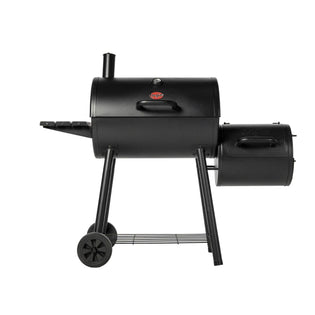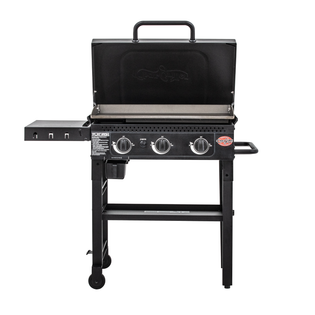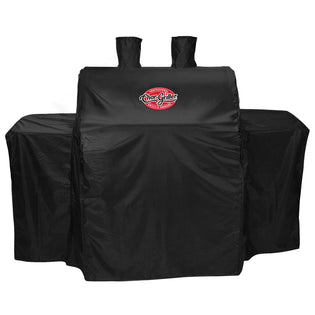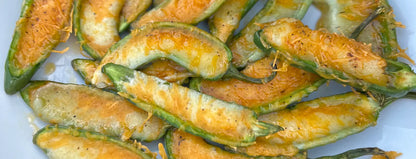When you’re preparing a turkey, you can roast it, or of course, smoke it. In this blog, we explain the difference and offer tips on how to successfully cook a turkey using both methods.
Roasting
Roasted turkey requires a much shorter cooking time than smoked turkey. It produces that coveted golden color and crispy skin that everyone loves, however the flavor is much milder and more subtle than that of a smoked turkey. Smoked turkey can take almost up to 4x the amount of time to prepare than a roasted turkey. Smoking provides deep flavor, tender results and a blackened exterior.
After defrosting, remove the neck and giblets then rinse and pat the turkey dry before covering in oil and seasoning. There is no need to brine your turkey before roasting.
When roasting your turkey, it’s the perfect time to get more liberal and creative with your seasonings. With smoking, it adds its own unique flavor profile, especially with wood. With roasting, it takes much longer for flavors to develop.
Easily create the oven effect within your grill by setting up for the indirect method. This will save space in your kitchen, so you can focus both your attention (and your oven) on delicious side dishes without a hassle. Instead of cooking in the 225-275°F range, increase the temperature to the 350-400°F range. Place the turkey in a disposable heavy-duty aluminum pan prior to putting it on your grill. Be sure to turn the pan at a 180° angle halfway through for even cooking.
Cook until both the thickest part of the breast and thigh have reached at least 165°F. Always be sure to let your meat rest prior to carving for at least 30 minutes.
To prepare delicious roasted turkey breast, simply follow these tips with a whole bone-in breast. The cooking time will be much shorter, but the technique will work just fine. It is done once the thickest part of the breast reaches 165°F.
Smoking
Before smoking your turkey, after removing the neck and giblets, it’s a good idea to brine it first to prevent it from drying out in the smoker. Although the exact brining mixture is largely up to your discretion, classic ingredients include 2-3 gallons of water, salt, garlic, apple cider vinegar, bay leaves, citrus fruits, sugar and more. Brine overnight, breast side down for up to 24 hours to prevent it from absorbing too much salt.
After brining, rinse with cold water and pat as dry as possible. After rubbing oil or butter on both the interior and exterior, add salt, pepper, and garlic. You may add other rubs, herbs or spices, but bear in mind the brine also imparted a lot of flavor, coupled with the flavors from the wood, you may not want to overdo it.
You may also add aromatics to your turkey’s cavity before smoking like Coca-Cola poured inside, apples, onions, and/or garlic. You can even pour some beer onto your turkey and into your roasting pan for a good basting liquid, then put the entire bottle or can into the cavity for added moisture. Feel free to get creative.
Set up the indirect method in your smoker.
If you have an offset smoker, light the coals in your charcoal chimney and add to the Side Fire Box before topping with your wood chunks of choice. Maintain a temperature of 225-250°F. Be sure to add a drip pan.
If you’re using your charcoal barrel, simply arrange charcoal and wood on one side under the grates for a two-zone set up, get it up to that 225-250°F mark then add turkey in the no heat zone. Add a water pan directly underneath the turkey.
If you’ll be smoking in your AKORN, arrange your coals in the “Ring of Fire” set up by first lighting them in the charcoal chimney then carefully arranging them amongst the perimeter of the grill. For added wood flavor, feel free to add soaked wood chunks or chips atop the coals. Add a water pan directly underneath.
Smoke until the internal temperature of the thickest part of the breast and thigh is at least 165°F. Be sure to let it rest for at least 30 minutes before carving.
For a full breakdown on how to smoke a turkey low n’ slow, visit our Guide to Smoking a Turkey blog here.

 Flat Iron® Portable 17-inch Gas Griddle
Flat Iron® Portable 17-inch Gas Griddle
 Flat Iron® Premium Gas Griddle
Flat Iron® Premium Gas Griddle
 Flat Iron® Gas Griddle with Lid
Flat Iron® Gas Griddle with Lid


 Sauced and No Sauce Spare Ribs
Sauced and No Sauce Spare Ribs
 Pulled Pork n' Bacon Cheesy Sliders
Pulled Pork n' Bacon Cheesy Sliders
 Smoked Pulled Leg of Lamb
Smoked Pulled Leg of Lamb



